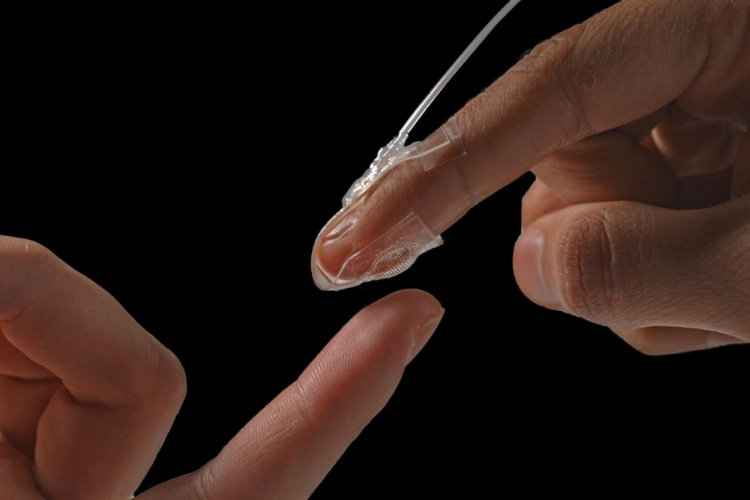The breakthrough has been made by EPFL's Reconfigurable Robotics Lab (RRL), headed by Jamie Paik, and the Laboratory for Soft Bioelectronic Interfaces (LSBI), headed by Stéphanie Lacour at the School of Engineering.
The skin's system of soft sensors and actuators enable the artificial skin to conform to the exact shape of a wearer's wrist, for example, and provide haptic feedback in the form of pressure and vibration. Strain sensors continuously measure the skin's deformation so that the haptic feedback can be adjusted in real-time to produce a realistic sense of touch. The scientists' work has just been published in Soft Robotics.
Lightweight pump makes push for soft robots
Next-generation bionic hand restores sense of touch
"This is the first time we have developed an entirely soft artificial skin where both sensors and actuators are integrated," said Harshal Sonar, the study's lead author. "This gives us closed-loop control, which means we can accurately and reliably modulate the vibratory stimulation felt by the user. This is ideal for wearable applications, such as for testing a patient's proprioception in medical applications."

According to EPFL, the artificial skin contains soft pneumatic actuators that form a membrane layer which can be inflated by pumping air into it. The actuators can be tuned to varying pressures and frequencies up to 100Hz. The skin vibrates when the membrane layer is inflated and deflated rapidly. A sensor layer sits on top of the membrane layer and contains soft electrodes made of a liquid-solid gallium mixture. EPFL further adds that the electrodes measure the skin's deformation continuously and send the data to a microcontroller, which uses the feedback to fine-tune the sensation transmitted to the wearer in response to the wearer's movements and changes in external factors.
The artificial skin can be stretched up to four times its original length for up to a million cycles, making it applicable for a number of real-world applications. So far, the scientists have tested it on users' fingers and are making improvements to the technology.
"The next step will be to develop a fully wearable prototype for applications in rehabilitation and virtual and augmented reality," Sonar said in a statement. "The prototype will also be tested in neuroscientific studies, where it can be used to stimulate the human body while researchers study dynamic brain activity in magnetic resonance experiments."

Glasgow trial explores AR cues for autonomous road safety
They've ploughed into a few vulnerable road users in the past. Making that less likely will make it spectacularly easy to stop the traffic for...